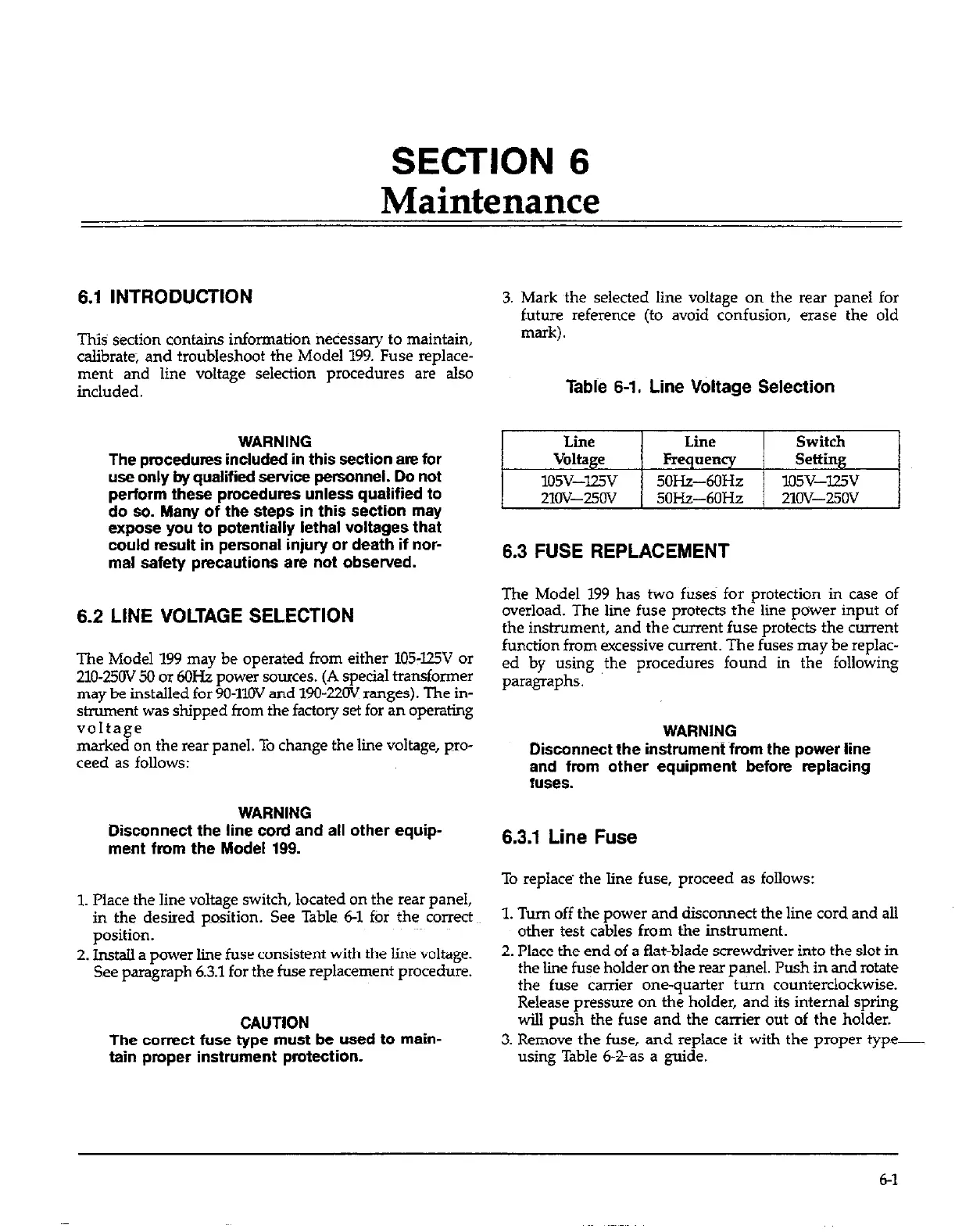SECTION 6
Maintenance
6.1 INTRODUCTION
This section contains information netiessary to maintain,
calibrate; and troubleshoot the Model 199. Fuse replace-
ment and line voltage selection procedures are also
included.
WARNlNG
The procedures included in this section are for
use only by qualified service personnel. Do not
perform these procedures unless qualified to
do so. Many of the steps in this section may
expose you to potentially lethal voltages that
could result in personal injury or death if nor-
mal safety precautions are not observed.
6.2 LINE VOLTAGE SELECTION
The Model 199 may be operated from either lC!5425V or
210~2SOV 50 or 6OHz power sources. (A special transformer
may be installed for 90-1lOV and WO-220V ranges). The in-
strument was shipped from the factory set for an operating
voltage
marked on the rear panel. To change the lie voltage, pro-
ceed as follows:
WARNING
Disconnect the line cord and all other equip-
ment from the Model 199.
1. Place the line voltage switch, located on the rear panel,
in the desired position. See Table 6-l ftir the correct
position.
2. install a power line fuse consistent with the line voltage.
See paragraph 6.3.1 for the fuse replacement procedure.
CAUTION
The correct fuse type must be used to main-
tain proper instrument protection.
3. Mark the selected line voltage on the rear panel for
future reference (to avoid confusion, erase the old
mark).
Table 6-1. Line Voltage Selection
Line Line
Voltage
Frequency
lO5v425v
50Hz-6OHz
210%25OV
SOHz-6OHz
Switch
Setting
105v-G!5v
21W-250V
6.3 FUSE REPLACEMENT
The Model 199 has two fuses for protection in case of
overload. The lie fuse protects the line power input of
the instrument, and the current fuse protects the current
function from excessive current. The fuses may be replac-
ed by using the procedures found in the following
paragraphs.
WARNING
Disconnect the instrument from the power line
and from other equipment before replacing
fuses.
6.3.1 Line Fuse
To replace the line fuse, proceed as follows:
1. Turn off the power and disconnect the line cord and all
other test cables from the instrument.
2. Place the end of a flat-blade screwdriver into the slot in
the line fuse holder on the rear panel. Push in and rotate
the fuse carrier one-quarter turn counterclockwise.
Release pressure on the holder, and its internal spring
will push the fuse and the carrier out of the holder.
3. Remove the fuse, and replace it with the proper type-
using Table 6-Z-as a guide.
6-I
